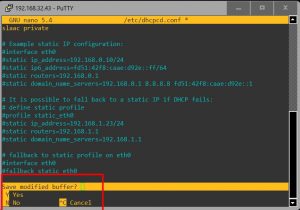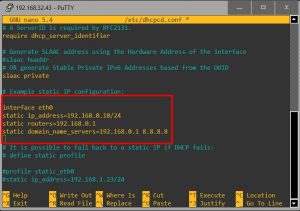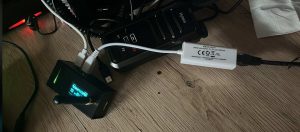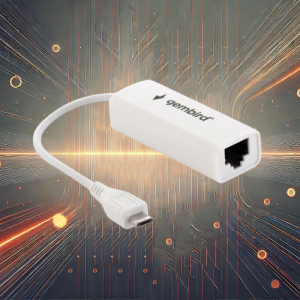MMDVM HotSpot DMR to YSF Config
digirig FT-8 digital interace
Hogyan konfiguráljuk az MMDVM HotSpotunkat Pi-Star alatt DMR módban?
QSL lap küldése a BREKO.HU oldalról
Van már saját QSL lapod? Szoktál küldeni a QSO-k után? Ha még nincs, de szeretnél, most egyszerűen megteheted a BREKO.HU segítségével! Nincs szükség tervezésre: egy modern, stílusos QSL lapot küldhetsz az ellenállomásnak mindössze egy gyors űrlap kitöltésével. Próbáld ki, és tedd még emlékezetesebbé a QSO-kat!

A QSL lap küldő, csak regisztrált és bejelentkezett felhasználók számára érhető el.
MMDVM HotSpot dedikált FIX IP címmel
MMDVM HotSpot dedikált FIX IP címmel, de hogyan?
Előző hírlevelemben elmondtam, hogyan lehet az MMDVM HotSpotot Wireless kapcsolat nélkül használni vezetékes módban. Most azt beszéljük át röviden, hogyan lehet pár lépésből a HotSpotnak dedikált FIX IP címet adni.
1.) lehetőség:
Ha a saját routerünkben rezerválunk egy IP címet a HotSpotnak. Ehhez ismernünk kell a HotSpot MAC címét, melyet a modem webes felületén találunk meg, ahol a Wi-Fi-t tudjuk konfigurálni.

Ezt a mac címet kell hozzárendelni, egy a routerünk által kezelt (DHCP) IP cím tartományába tartozó IP címhez, melyet innentől kezdve a HotSpot fog használni mindaddíg amíg:
– nem töröljük a rezerválást
– routert nem cserélünk
– raspberry pi-t nem cserélünk.
***ha vezetékesen használjuk a HotSpotot, akkor nem látjuk a felületen a vezetékes kártya adatait, ezek kiolvasását később taglalom.
Ez a beállítási menüpont eszközönként eltréthet, de a logikája mindig, minden eszközön ugyanaz. Fontos, hogy a router csak az általa kezelt DHCP tartományból tud IP címet rezerválni. Mit jelent ez? Ha a routerünk a 192.168.0.100 – 192.168.0.200 tartományból oszt címeket a bejelentkező eszközöknek, akkor a Hotspot is ebből a tartományból fog kapni egy „fix” címet, nem kérhetek neki pl. 192.168.0.10-es címet. Miért probléma ez? Tulajdonképpen nem probléma, csupán ha valaki egy picit adni szeretne a saját hálózatának a struktúrájára akkor az a szokás, hogy:
Router: 192.168.0.1
Fix IP címmel ellátott eszközök: 192.168.0.2 – 192.168.0.20 (pl.: nyomtatók, NAS, kamerák, szerverek, AP-k, hálózati esztközök, stb…)
Kliensek: 192.168.0.100-192.168.0.200
Így szépen struktúrálva van a hálózatunk.
2.) lehetőség
Inkább manuálisan adjunk a HotSpotnak egy dedikált címet, a DHCP tartományon kívülről, így minden eszköz a helyén maradhat az IP struktúrában, és a routerbe se kell belepiszkálnunk.
Hogyan tegyük ezt?
– töltsünk le a gépünkre (Windows esetén) egy PUTTY nevű kis alkalmazást, ez fog segíteni kapcsolódni a HotSpothoz. Aki esetleg Linuxot használ ott az SSH kliens adott. A letöltött PUTTY-ot nem kell telepíteni, 1db .exe file az egész Másoljuk bele egy mappába, más dolgunk nincs vele.
– derítsük ki, hogy jelenleg milyen IP címe van a HotSpotnak?! Ha nem tudjuk, akkor megnézzük a Hotspot kijelzőjét, ott lesz az IP címe.
– konnektáljunk a hotspothoz: nyissunk egy command ablakot, és navigáljunk abba a mappába, hova a PUTTY nevű alkalmazásunkat tettük, majd adjuk ki a következő parancsot:
putty -ssh pi-star@192.168.X.X (az IP cím helyére a Pi-Star IP címét ell írni)

A kapcsolódás alkalmával a felugró ablakban az „ACCEPT” gombra kell klikkelni, majd be kell írnunk a Pi-Star jelszavát, ami alapértelmezetten: raspberry
Ha sikeresen beléptünk, akkor le kell vennünk az írásvédelmet a pi-star rendszerkötetről, anélkül nem tudunk belenyúlni. Adjuk ki a következő parancsot:
sudo mount -o remount,rw /

Ezt követően beállítjuk azt az IP címet, amit szeretnénk, hogy a Pi-Star használjon.
Adjuk ki a következő parancsot:
sudo nano /etc/dhcpcd.conf

Majd módosítsuk a megnyíló file-t a minta szerint, adjuk hozzá a következő sorokat:

PL.:
interface wlan0 static ip_address=192.168.1.10/24 static routers=192.168.1.1 static domain_name_servers=8.8.8.8 8.8.4.4
Itt az IP cím, a korábbiakban taglaltak alapján, egy a DHCP tartományon kívüli IP cím legyen lehetőség szerint. CSAK az IP címeket alakítsuk a saját hálózatunkhoz, a többi paramétert hagyjuk úgy!
Ha a beállítás kész, mentsük el! CTRL + X, és a mentésre mondjuk IGEN-t.

Ha a beállításokkal végeztünk, állítsuk vissza a rendszer írásvédettségét:
sudo mount -o remount,ro /

Ezt követően indítsuk újra a HotSpotot!
sudo reboot
Ha mindent jól csináltunk, akkor a HotSpot indulása után már a beállított fix IP címmel fog a HotSpot dolgozni és innentől mindig ezen fogjuk elérni!
Mi a helyzet, ha vezetékes hálózaton van a HotSpot?
Az aktuális IP címét a kijelzőről leolvashatjuk. És ha nincs kijelző? Ha nincs kijelzőnk, akkor a fentebb írt megoldással derítsük ki (pl. routerből kiolvashatjuk), hogy mi az IP cím, majd ezt követően kapcsolódjuk a fenti módon a Pi-Starhoz.
A Pi-Starba belépve, mindent a fentebb leírtak alapjn kell elvégezni vezetékes hálózati kapcsolódás esetén is, egyetlen különség van, hogy a megadott konfigurációs file-ban nem a wlan0 interfészre kell hivatkozni hanem az eth0-ra. Hogy is néz ez ki?

interface eth0 static ip_address=192.168.1.10/24 static routers=192.168.1.1 static domain_name_servers=8.8.8.8 8.8.4.4
FIGYELEM!
Akár egyszerre is konfigurálható a WLAN és a LAN interfész, ez teljesen megengedett. Ebben ez esetben kettő IP beállítási blokk szerepel a konfigurációban:
interface wlan0 static ip_address=192.168.1.10/24 static routers=192.168.1.1 static domain_name_servers=8.8.8.8 8.8.4.4
interface eth0 static ip_address=192.168.1.20/24 static routers=192.168.1.1 static domain_name_servers=8.8.8.8 8.8.4.4
Ebben az esetben arra kell figyelni, hogy véletlenül se ugynazt az IP címet adjuk meg mindkét interfésznek, még akkor sem ha egyik használaton kívül van!
Fentebb leírtak alapján mindenki fix elérhetőségűvé tudja varázsolni a HotSpot-ját!
Sok sikert, csak ügyesen!
Ha kérdésed merülne fel, tedd fel a fórumban!
A módosításokat mindenki csak saját felelősségére vegezze!
HA7LCA
MMDVM HotSpot (Raspberry Pi Zero/Zero 2W) Wireless nélküli használata.
MMDVM HotSpot) Wireless nélkül
Az utóbbi időben sokszor belefutottam abba, hogy az általam használt MMDVM HotSpotok leszakadtak a Wi-Fi-ről, instabillá váltak, hangzásban bugyogtak és egyéb anomáliák történtek.
Elkezdtem keresni az okokat, különböző teszteket végeztem:
– rendeltem új Pi Zero-t
– rendeltem új modemet
– cseréltem AP-t
– Multi SSID-ket hoztam létre amit csak a HotSpot használt, MAC cím szűréssel, hogy véletlenül se tévedjen oda más.
– a HotSpotot 50cm-re tettem az AP-től. A jelszint -45db lett ami kiváló, de a probléma továbbra is fennállt.
– írtam egy kis monitoring Scriptet ami 30mp-ként megszólította a HotSpotokat, és ha nem válaszolt, akkor e-mailt küldött, ebből összeállt hogy a HotSpot mennyire stabil vagy nem. Volt olyan nap, amikor 100 levelet is kaptam, hogy csomagvesztés törétnt a hálózati teszteléskor. (Megj.: semmilyen más eszköz nem szakadozott le, mondjuk a többség 5GHz-et használ)
– igaz, ez egy sűrűn lakott terület és sok a Wi-Fi sugárzó, 1-1 csatornán akár többen is csücsülnek, de 50cm-ről talán illenék stabilnak lenni.
– a HotSpotok Wireless érzékenysge kb. a 0-hoz konvergál. Wi-Fi6-os eszközről, 2,4GHz-en, 1 db szobaajtón keresztül a jelszint -80db-re esett le.
Na ekkor mondtam, hogy ebből elég, és oldjuk meg vezetékesen ezeket az itthoni HotSpotokat. Gondoltam veszek micioUSB LAN kártyát, bedugom és ennyi. De mielőtt beleugrottam volna, kicsit utánaolvastam. A megoldás végül valóban ennyi, de nem mindegy milyen microUSB kártyát használsz, mert a Raspberry Pi Zero nem támogat mindent, és ha nem vagy penge a Linux driver teleptésben akkor eléggé mellényúlhatsz.

Akkor milyen kártya is a jó és stabil? Több is van, de én ezt javaslom, mert ez a tuti: Realtek RTL8152/RTL8153 chipsettel szerelt kártyák.
Egy ilyen kártya kb. 2.500,- Ft, a Pi Zero azonnal felismeri (újraindítás után – Plug and Play) és már megy is a HotSpotod vezetékes hálózatról stabilan.
Én a Gembird NIC-MU2-01 kártáyit használom.


Tökéletesen működnek, nem igényltek konfigurációt, a HotSpot stablilitása 100% lett. Kommunikáció alatt a BER (csomagvesztés) 0,1% volt általában. Akivel beszélgettem, bugyogást vagy egyéb rádiós anomáliát nem tapasztalt irányomból.
Azóta mindegyik HotSpotom itthon vezetékesen van csatlakoztatva és stabilan működnek. Javaslat: a vezetékes átállás után a Wi-Fi konfigurációt töröld a Pi Zero-ról, és kapcsold ki az Auto AP módot! Ha Wi-Fi is meg vezetékes kapcsolat is van, az tapasztalatom szerint csak ront a helyzeten. Ha fix IP címet szeretnél adni a Pi-nek az is megoldható, de ahhoz ici-picit ismerni kell a Linuxot. 🙂
[PROBLEM SOLVED]
Elindult a QRP Shop!
Szerk: HA8LHT
Szép és jó dolgokat építettünk közösen meg, de a rendelési minimum felett érkező igényeket nem lehet a végtelenségig elutasítani. A hazai kereskedelmi szabályozás viszont komoly követelményeket támaszt az értékesítés során, melyet be kell tartani.
A korábbi gyakorlat az volt, hogy a rendelési minimumból megmaradt paneleket – kiegészítve a pontos, terv szerint történő megépítést lehetővé tevő alkatrészekkel – anyagáron átadtam, ám az igények ezen azóta is messze túlmutatnak.
A harmadik verziót taposó Pixie Juniorból Kanada és Afrikába is került, még a QRZ-n is fel volt tüntetve a QSO vele. Ez egyfelől rendkívül jó érzés, másrészt viszont bőven túlmutat a lehetőségeken, jó lenne folytatni a hobbi népszerűsítését és az építő amatőrök segítését.
Az árak maradnak, de a rendelés egyszerűsödik és a készlet nő – ennek jegyében született meg a shop.qrp.hu áruház, ahol a korábban népszerű holmik találhatóak meg. Mivel a nyár során számos jó ötlet született, nem egy a tervezőasztalra is került, a tél pedig hosszú lesz, így hamarosan sok-sok rádióval, tartozékkal, kiegészítővel és filléres aprósággal töltöm meg. Bízom benne, a nagyobb mennyiségben utánrendeléses vagy a vámon átcsúszó panelek miatt (khm…) néhány dolog később olcsóbb is lehet majd, bár addig nagy utat kell megtenni.
Elsősorban az építésben és a használatban kiteljesedő élményt szeretnék kínálni, nem eladni bármi áron különböző termékeket. A shop koncepciója szerint így azok a dolgokat kerülnek bele, amiket én is kiválasztottam magamnak, használok vagy ajánlok másoknak.

Az értékesítés fehérítése mellett bízom benne, számos érdekes és tényleg nagyszerű projekt befejezésére vagy továbbfejlesztésére is ösztönöz majd a shop, miközben könnyebben elérhetővé tesz megannyi izgalmas kis berendezést, kiegészítőt.
Szeretném hangsúlyozni, hogy ez nem egy professzionális üzlet, ez egy közösségi kezdeményezés megtestesülése, ahol együtt, közösen tettünk bele sok-sok kellemesen eltöltött órát, tapasztalatot és barátságot mindabba, amit talán egyre szélesebb körben ismerhetnek ezáltal meg.
Ráadióamatőr vizsga teszt feladatsor
Rádióamatőr vizsga teszt feladatsor a BREKO.HU oldalon.

60 perc, 70 kérdés véletlenszerűen generálva, feleletválasztós formában. A válaszok sorrendje is véletlenszerű. A sikeres teszthez 80% helyes válasz szükséges. Tedd próbára magad! A teszt kitöltéséhez be kell jelentkezned. Ha nem vagy regisztrált tag, akkor regisztrálj az oldalra!
Készülj az éles NMHH által szervezett Rádióamatőr vizsgára a BREKO.HU folyamatosan bővülő teszt feladatsorával!
Sok sikert a teszthez!
HA7LCA
A Napkitörések és Egyéb Légköri Jelenségek Hatása a Rádióforgalmazásra és Hullámterjedésre
A Napkitörések és Egyéb Légköri Jelenségek Hatása a Rádióforgalmazásra és Hullámterjedésre
A rádióamatőrök és más rádiófrekvenciákat használó rendszerek számára a Napkitörések és különféle légköri jelenségek jelentős hatással lehetnek a hullámterjedésre. Ezek a jelenségek az ionoszférában és a földi légkörben olyan változásokat okoznak, amelyek befolyásolhatják, hogy a rádiójelek milyen messzire és milyen minőségben terjednek.
Mi az a napkitörés, és hogyan hat a rádióforgalmazásra?
A napkitörés (más néven flar) a Nap felszínéről származó intenzív robbanás, amely hatalmas mennyiségű energiát szabadít fel, beleértve az elektromágneses sugárzást. A napkitörések elsősorban a magasabb frekvenciájú rádióhullámok terjedését befolyásolják, amelyek az ionoszférán keresztül verődnek vissza a Föld felszínére.
Amikor egy napkitörés eléri a Földet, az ionoszférában jelentős zavart okoz, ami következtében az alábbi hatások léphetnek fel:
- Megerősített D-réteg abszorpció: A napkitörés által kibocsátott erős UV- és röntgensugárzás növeli a D-réteg ionizációját, amely elnyeli a rövidhullámú (HF) jeleket. Ez a jelenség gyakran nappali rádiócsendhez vezethet.
- Ionizációs zavarok: A napkitörések képesek megnövelni az F-réteg ionizációját is, amely jelentős változásokat okozhat a rádióhullámok visszaverődésében, különösen a magasabb frekvenciákon.

A mágneses viharok hatása
A napkitöréseket gyakran követik mágneses viharok, amelyek a Föld mágneses mezőjében okoznak zavarokat. Ezek a viharok a napkitörés után néhány órával, vagy akár nappal később is bekövetkezhetnek. A mágneses viharok hatásai:
- Rádiójelek szétszóródása: A mágneses viharok a magasabb földrajzi szélességeken jelentős hatással lehetnek a rádióhullámok terjedésére. A jelek szóródása miatt a távoli állomások nehezen érhetők el, és a jelek gyengülhetnek.
- Aurora zóna zavarai: A mágneses viharok során az auróra (sarki fény) zónában zajló rádióforgalmazás különösen érintett lehet. Az auróra ionoszférája gyakran elnyeli vagy megzavarja a jeleket, így a rádiókapcsolatok instabillá válnak.
Az ionoszféra és a hullámterjedés
A rádiójelek terjedése szorosan összefügg az ionoszféra állapotával. Az ionoszférában lévő elektronok visszaverik a rádióhullámokat, ezáltal lehetővé teszik, hogy a jelek messzebbre jussanak, mint amennyit a Föld felszínén való terjedéssel elérnének.
Az ionoszféra állapota azonban folyamatosan változik a Nap aktivitása és más légköri jelenségek hatására. Például:
- Nappal és éjszaka: Nappal a Napból érkező sugárzás erősen ionizálja az ionoszféra D-rétegét, amely nappali HF rádiócsendet okozhat. Éjszaka azonban a D-réteg elnyelése csökken, és a HF hullámok messzebb terjedhetnek.
- Sporadikus E-réteg: Időnként az ionoszféra E-rétegében kialakuló koncentrált elektronfelhők (sporadikus E) olyan visszaverődéseket okoznak, amelyek lehetővé teszik a rövidhullámú (VHF) rádióforgalmazást nagyobb távolságokra.
Milyen gyakran fordulnak elő ezek a jelenségek?
A Nap aktivitása ciklusokban zajlik, amelyek körülbelül 11 évenként csúcsosodnak ki. Az aktívabb napciklusok idején gyakoribbak a napkitörések és mágneses viharok. A jelenlegi napciklus a 25. ciklus, amelynek aktivitása várhatóan 2025 körül éri el a maximumot.
Ezek a ciklusok nagymértékben befolyásolják a rádióamatőr forgalmazást, különösen a rövidhullámú sávokban. Aktív napciklusok idején nagyobb az esélye annak, hogy napkitöréseket tapasztalunk, amelyek jelentősen megváltoztathatják a rádióhullámok terjedését.
A napkitörések, mágneses viharok és egyéb légköri jelenségek jelentős hatást gyakorolnak a rádióforgalmazásra és a rádióhullámok terjedésére. Ezek a jelenségek gyakran megzavarhatják a kommunikációt, de bizonyos esetekben kedvező terjedési feltételeket is teremthetnek. A rádióamatőrök számára a naptevékenység figyelése elengedhetetlen ahhoz, hogy felkészüljenek ezekre a változásokra, és kiaknázzák a lehetőségeket.

